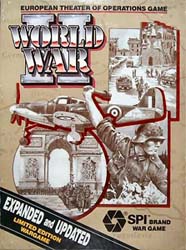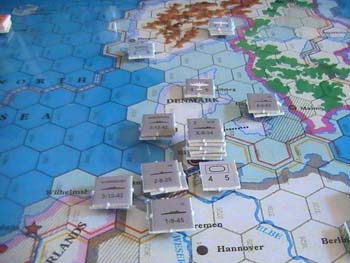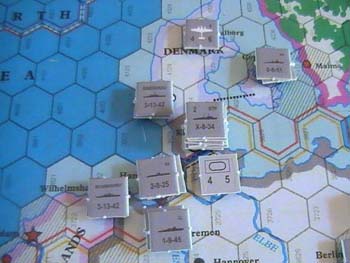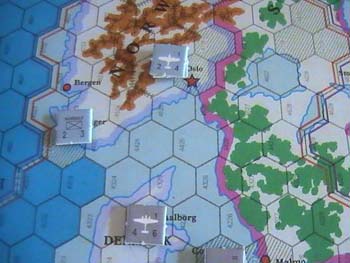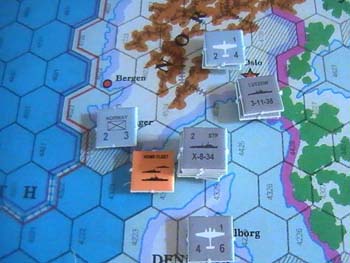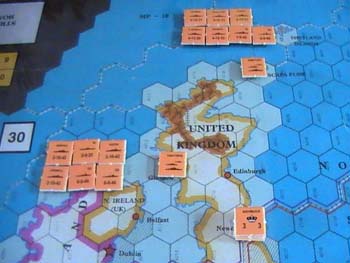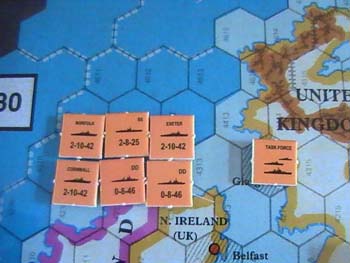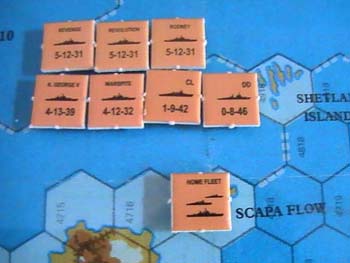| A
two-player scenario of the German invasion of Norway. One player controls the
German forces, the other the Norwegian and British forces. Use all rules except
Part 1: Seasonal Turns and Part 3: Strategic Warfare. Playing
Time: 60 minutes
Start: April 1940
End: June 1940
Order
of Battle
Germany: Anywhere in Germany or Denmark:
2 infantry
(6-3)
1 armor (4-5)
2 paratroops (1-3)
6 STPs
2 ATPs
1 fighter-bomber
(4-6/1) 1 bomber (6-12) HQ M
2 CLs 2 DDs
5 BBs (Gneisnau, Scharnhorst, Lutzow.
Scheer,
Blucher)
1 tactical submarine
4 offensives on the OFF track 4 EPs in economic
reserve. Norway:
Can be placed anywhere in
Norway after Germany declares war:
1 infantry
(4-3)
3 infantry (2-3)
1 fighter-bomber (2-4/1)
1 DD United
Kingdom: Anywhere in the
United Kingdom:
2 infantry (3-4)
1 bomber (4-12)
General Auchinleck
5 BBs (Warspite, Rodney, King George V,
Resolution, Revenge)
3
CAs (Cornwall, Exeter, Norfolk) Glorious with 1 naval air unit
1 tactical
submarine
3 DDs
1 CL
3 STPs
2 offensives on the OFF track 2 EPs in
economic reserve.
Setting Up
The German
player sets up first. His units must be placed in Germany or Denmark.
The British/Norwegian
player then sets up his British units in England.
The Norwegian units are placed
on the board during the phase when Norway is invaded, in accordance with [39.0].
Special
Rules
Skip the Strategic Warfare
step of each turn.
Germany has initiative throughout the scenario.
If Glorious
is sunk or damaged, the British player receives Ark Royal to replace it. Ark Royal
is placed in Scapa Flow at the end of the turn in which Glorious was damaged.
Victory
The
German player's objective is the conquest of Norway. Victory is determined according
to this priority: German
Strategic Victory:
Norway is conquered.
German Major Victory: Only one Norwegian city
or resource hex remains uncaptured.
German Minor Victory: Two Norwegian
city or resource hexes remain uncaptured.
Allied Minor Victory:
There are supplied German units in Norway, but at least three city or resource
hexes remain under Norwegian control.
Allied Major Victory: Germany
controls no Norwegian city or resource hexes.
Allied Strategic Victory:
The Allies win a major victory and fulfill the naval attrition victory condition
described below.
Naval Attritition Victory: If the Germans lose
all four of their BBs, or a total of six naval units (sunk, not just damaged),
the victory condition drops one place on the hierarchy. For example, a German
strategic victory at the cost of six naval units becomes a German major victory.
|
